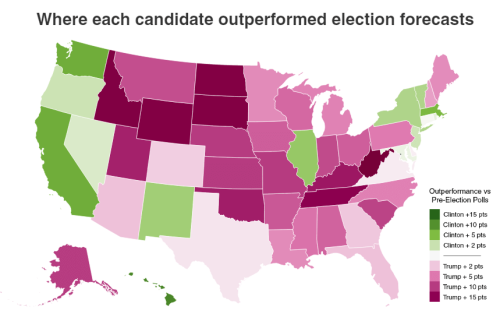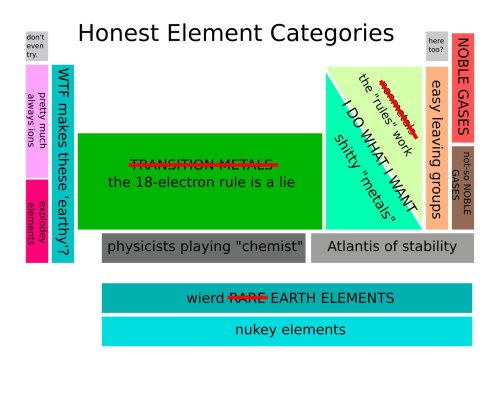Pig Latin

Pig latin
More Posts from Stubborn-turtle-blog and Others
Woman who loves science over here
Science Side of Tumblr, I need your help! Ladies of the Science Side of Tumblr, I especially need your help!
I had a conversation at my non-science day job that went like this:
A friend who shall be called Diane (not her real name) comes to my desk to chat. Just one of the many topics we discuss is that her boyfriend is taking a class in wildlife biology. She has decided that she has grown tired of hearing about local wildlife and hearing him recite a plethora of scientific names.
I responded positively to this subject, and told her that I too found the subject interesting. A third person had heard our conversation. We shall call her Claire (again, not her real name). Claire immediately responded, “Girls don’t like that kind of thing.”
“Are you saying that girls don’t like science?” I asked.
“No, not normally they don’t,” she responded.
Before you all screech with anguish, bear with me for a moment. We all know that this is not true. As a man, I find this idea upsetting for countless reasons that have all been validly discussed before. To try to debate the issue is rather moot. Instead, I’d like a show of hands.
Ladies of the Science Side of Tumblr! I call you to arms! Will you rally around me in saying that women can and do indeed love science, of any variety? Gentleman of the Science Side of Tumblr who know someone who is a girl who also happens to love science, will you stand with me too? We all like and reblog the pro-women-in-science posts we see so often, let’s all stand and be counted in one place this time.
Reblog this if you are a woman who loves science. Reblog this if you are a man who knows a woman who loves science. Let us disprove her beyond all doubt!

This map shows where the polls got it wrong Purple = Trump received more votes than expected Green = Clinton received more votes than expected Click here for full election results
We can build things by growing plants in specific configurations now. We are slowly becoming elves.
I dance the Waltz to look refined. I dance Salsa to look exotic. I dance the Tango to look sexy. I dance Blues to look sexual. I dance West Coast Swing to look smooth. And I dance Lindy Hop so I can stop worrying what I look like and just have fun bouncing and swirling like a deranged yo-yo.
If This Isn’t From a Book, It Should Be (via gaircyrch)
I’d argue that Westie looks like what ever you want it to be (I dance it because I love how free I feel)

IS SCIENCE EATING ITS YOUNG?
Background. Scientists and policy makers around the world increasingly worry about the plight of young researchers in academia, and for good reason. Competition for tenure-track positions has surged, and some early career researchers face tough odds in the quest for funding. This week Nature pleads the case for the young in a special issue.
Design challenge. How do we visually convey the idea that science is eating its young? We felt it was important to represent a system that has gone wrong, with various consequences, in an engaging way. The metaphor of a video came to mind, as young scientists find themselves trapped in framework, playing along.
We gave this brief to Megapont, an artist that specializes in isometric pixel art, and he created a fantastic scene for the cover. The retro gaming vibe gives a sense of an aging system that needs an overhaul. The detail in the artwork rewards the observant reader, with hidden treasures and references to iconic games and other worlds. And check out the tiny rat fleeing the scene - only a few pixels!
Have your say. Perhaps you are a young scientist who identifies with a cover character? Maybe the one slouched in dispair on the floor, or the one cutting out in bunny slippers? We’d like to hear your story – here’s a tumblr just for you: researchrealities.tumblr.com
-Kelly Krause

Sympathy cards for scientists | @myjetpack

Roboticists are putting a tremendous amount of time and effort into finding the right combination of sensors and algorithms that will keep their drones from smashing into things. It’s a very difficult problem: With a few exceptions, you’ve got small platforms that move fast and don’t have the payload capability for the kind of sensors or computers that you really need to do real-time avoidance of things like trees or powerlines. And without obstacle avoidance, how will we ever have drones that can deliver new athletic socks to our doorstep in 30 minutes or less?
At the University of Pennsylvania’s GRASP Lab, where they’ve been working very very hard at getting quadrotors to fly through windows without running into them, Yash Mulgaonkar, Luis Guerrero-Bonilla, Anurag Makineni, and Professor Vijay Kumar have come up with what seems to be a much simpler solution for navigation and obstacle avoidance with swarms of small aerial robots: Give them a roll cage, and just let them run into whatever is in their way. Seriously, it’ll be fine!
This kind of “it’ll be fine” philosophy is what you find in most small flying insects, like bees: They don’t worry all that much about bumbling into stuff, or each other, they just kind of shrug it off and keep on going. Or, if you’re a roboticist, you might say something like, “The penalty due to collisions is small at these scales and sensors and controllers are not precise enough to guarantee collision free trajectories,” so stop trying to solve the collision problem, and just focus on not completely trashing yourself when you hit something. (Swiss startup Flyability was among the first to demonstrate the benefits of collision robustness by equipping a regular-size drone with a gimballed protective cage and flying through forests and ice caves.)
-
 loudlyfreepeace liked this · 3 months ago
loudlyfreepeace liked this · 3 months ago -
 manebioniclegali reblogged this · 1 year ago
manebioniclegali reblogged this · 1 year ago -
 melhorsemsutia liked this · 1 year ago
melhorsemsutia liked this · 1 year ago -
 manebioniclegali liked this · 1 year ago
manebioniclegali liked this · 1 year ago -
 penaltybox14 reblogged this · 1 year ago
penaltybox14 reblogged this · 1 year ago -
 darkest-of-rats reblogged this · 1 year ago
darkest-of-rats reblogged this · 1 year ago -
 deepdarkdungeondubstep liked this · 1 year ago
deepdarkdungeondubstep liked this · 1 year ago -
 nextworldover liked this · 2 years ago
nextworldover liked this · 2 years ago -
 nicdevera reblogged this · 2 years ago
nicdevera reblogged this · 2 years ago -
 tanrenzu liked this · 2 years ago
tanrenzu liked this · 2 years ago -
 nynaeve-mashiara reblogged this · 3 years ago
nynaeve-mashiara reblogged this · 3 years ago -
 pagandisciple liked this · 3 years ago
pagandisciple liked this · 3 years ago -
 leaving-the-forest-was-a-mistake liked this · 3 years ago
leaving-the-forest-was-a-mistake liked this · 3 years ago -
 athena-warrior liked this · 3 years ago
athena-warrior liked this · 3 years ago -
 musicamagicbeyondallwedohere liked this · 4 years ago
musicamagicbeyondallwedohere liked this · 4 years ago -
 delightfuldazemoon liked this · 4 years ago
delightfuldazemoon liked this · 4 years ago -
 trilogyeffect liked this · 4 years ago
trilogyeffect liked this · 4 years ago -
 kitt-katts reblogged this · 4 years ago
kitt-katts reblogged this · 4 years ago -
 felice-jaganshi reblogged this · 4 years ago
felice-jaganshi reblogged this · 4 years ago -
 felice-jaganshi liked this · 4 years ago
felice-jaganshi liked this · 4 years ago -
 kittybug99 reblogged this · 4 years ago
kittybug99 reblogged this · 4 years ago -
 kittybug99 liked this · 4 years ago
kittybug99 liked this · 4 years ago -
 nullissime liked this · 4 years ago
nullissime liked this · 4 years ago -
 esmecristal liked this · 4 years ago
esmecristal liked this · 4 years ago -
 iamramonadestroyerofworlds liked this · 4 years ago
iamramonadestroyerofworlds liked this · 4 years ago -
 finisadragon reblogged this · 4 years ago
finisadragon reblogged this · 4 years ago -
 ash-tree-le-meilleur-tree liked this · 4 years ago
ash-tree-le-meilleur-tree liked this · 4 years ago -
 prynabep liked this · 4 years ago
prynabep liked this · 4 years ago -
 bluebells-and-shotgunshells liked this · 4 years ago
bluebells-and-shotgunshells liked this · 4 years ago -
 mc-dankenstein reblogged this · 4 years ago
mc-dankenstein reblogged this · 4 years ago -
 mc-dankenstein liked this · 4 years ago
mc-dankenstein liked this · 4 years ago -
 crushingmagnolias reblogged this · 4 years ago
crushingmagnolias reblogged this · 4 years ago -
 crushingmagnolias liked this · 4 years ago
crushingmagnolias liked this · 4 years ago
Gaming, Science, History, Feminism, and all other manners of geekery. Also a lot of dance
243 posts










